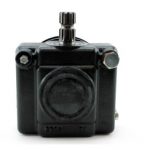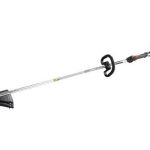LawnEQ is a trusted source for genuine OEM Parts- Shop for the part you need from your favorite manufacturers such as Landpride, Toro, Kubota, and more today on our OEM Parts Lookup Tool!
Part of caring for your lawn is caring for the trees that make it so enjoyable. There are plenty of problems that can spring up in the spring time to cause difficulties with your trees, that can attack them, damage them, or even kill them off before summer even arrives. With May rolling in, your deciduous trees should start showing a crown of lush, green, full leaves. Your evergreen trees, meanwhile, should display new buds and have a vibrant green color.
However, a variety of symptoms may come up signalling that your trees are unhealthy. There may only be a partial leaf-out, or the leaves themselves may be yellowed or damaged. Fungus may start growing on the trunk, or insect activity may become more apparent. There may even be dead wood becoming clear. These symptoms can signal a problem, either a bacteria, fungus, or insect-related issue. These symptoms may signal one or more of the following problems.
Leaf Spot
One of the most common diseases, you’ll likely see this pop up on ornamental trees regardless of how much effort is made to avoid it. It is a fungal disease that discolors and kills small, circular areas of tissue between or on a leaf’s veins. Leaf spot develops in cool, moist conditions, but can be spread from tree to tree on the wind. The good news is, leaf spot is almost entirely cosmetic, so if you don’t feel like using fungicides, you can simply control spread through irrigation, limited watering, and ensuring that you water the roots, not the foliage itself. Also make sure to clean up leaf litter to limit the spread of the fungus.
Anthracnose
Very similar in appearance and cause as leaf spot, anthracnose tends to attack shade trees like ash, maple, and sycamore. Instead of circular areas, it shows up as lesions that have a scorched appearance. This can appear on a regular basis, and while it is ugly and will cause defoliation, it is rarely fatal to the tree. It can cause leaf die-off, but thankfully many of the shade trees it will effect can produce a second round of leaves later on. It will also attack twigs, particularly those of sycamore trees, and may require pruning or fungicide to treat it.
Fire Blight
Unlike the first two, this is a disease brought on by bacteria, not a fungal issue. Unfortunately, this also allows it to be fatal to trees. It generally infects pears, apples, cotoneasters, hawthorns, pyracantha and mountain ash trees. Trees and shrubs infected with this disease have leaves that wilt and dry. The leaves and twigs turn brown and black, and appear to be scorched – upon close examination of the affected area will reveal a white, cream or reddish-colored ooze coming from wounds. Often the twigs will take on a shepherd’s crook shape as they wilt.
Fire blight is spread during warm, wet springs, and is generally carried by insects from flower to flower. It then spreads down the twigs from the infected flowers. While it potentially can kill a tree in a single season, it rarely moves that fast.. If fire blight is noticed later in the summer after bloom, the only treatment is to remove the infected wood. Cut the twig or branch 8 to 12 inches below the infection and remove the wood from the landscape or orchard. It can be prevented through applying a fire blight spray early in the spring, particularly if the weather is warm and wet.
Oak Leaf Blister
As you can tell by the name, this is a disease that specifically effects oak trees. It is another fungal leaf disease, displaying as circular, raised areas scattered over the upper leaf surface. The coloring of these blisters will be yellowish white and yellowish-brown. It may also lead to early defoliation – if it occurs early in the year, this can impact the overall health of the tree. During cool wet springs, almost all species of oak are subject to the leaf blister disease, with the red oak family being highly susceptible. Oak leaf blister can be avoided by regularly maintaining the trees to ensure full health and clearing away infected leaves and branches. Fungicides such as Daconil can be applied before bud break for prevention.
Iron Chlorosis
The pH levels in your ground and water doesn’t just effect your grass, it can also cause diseases in trees. Iron chlorosis is one of the most common of these, and it causes leaves to turn yellow while the leaf midrib remains green. As time passes, the leaves will become very pale and turn brown at the tips. It commonly occurs in plants more suited to acidic soils, when the pH of the soil is too high. High pH results in conversion of the iron to a form that the roots cannot absorb. It can be caused by several other things too, such as roots that are damaged by tilling, dry soil, and sandy soil with insufficient organic matter. Tilling damage and dry soil make the roots less able to take in nutrients.
Treating it involves gradually lowering the soil pH, although this may take a long time. Try adding 1-2 inches of compost to the soil every few years, or add sulphur or peat moss. Plants also can be mulched with conifer needles which will leach some acids into the soil. Short-term solutions include foliar application of iron chelate which is available from most garden supply stores. Spray a mix of 1 tbsp. iron chelate/gallon water on the tree leaves in early summer.
Knowing these common diseases that will attack your trees can help you to diagnose and treat early, or even work on prevention in the future. Keeping your trees healthy is an integral part of having a beautiful lawn.









One thought on “Diagnosing and Treating Common Spring Problems of Trees”
Comments are closed.